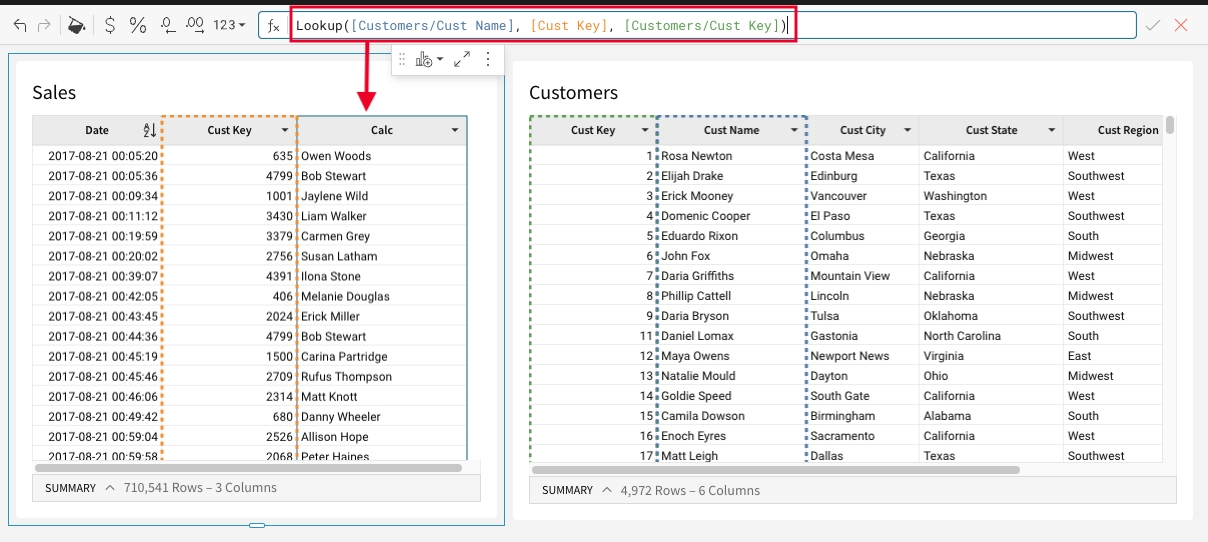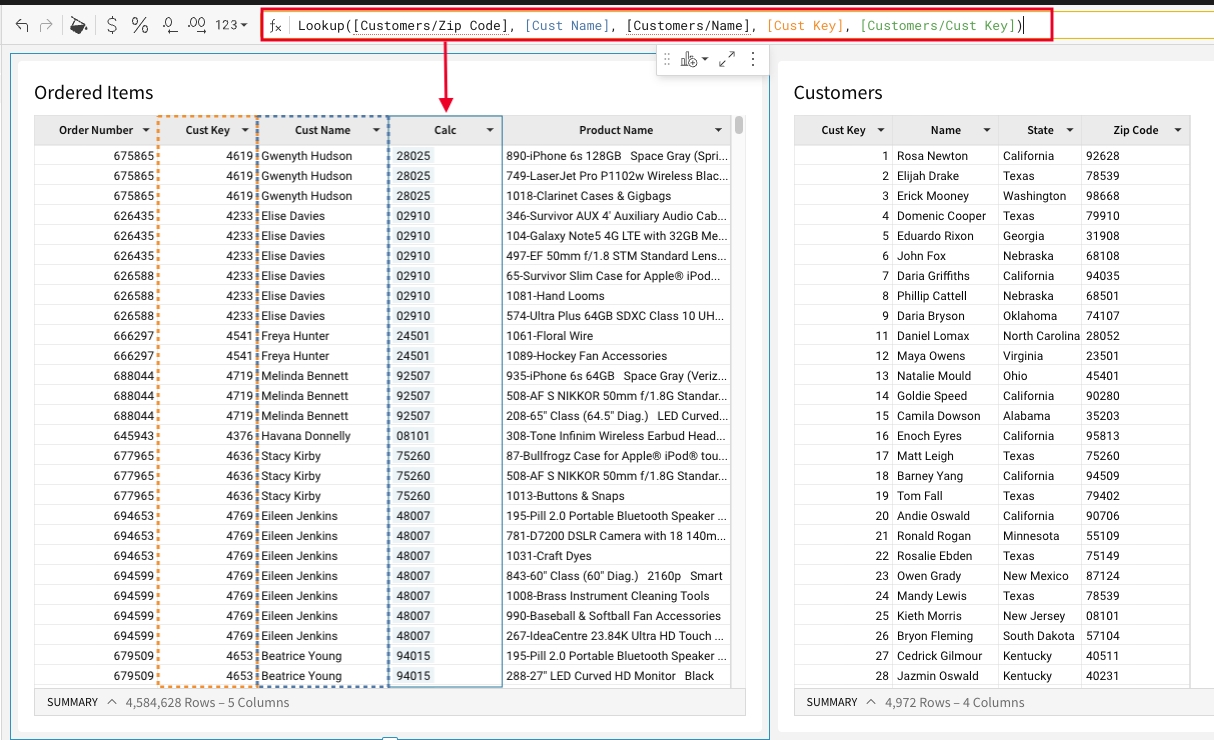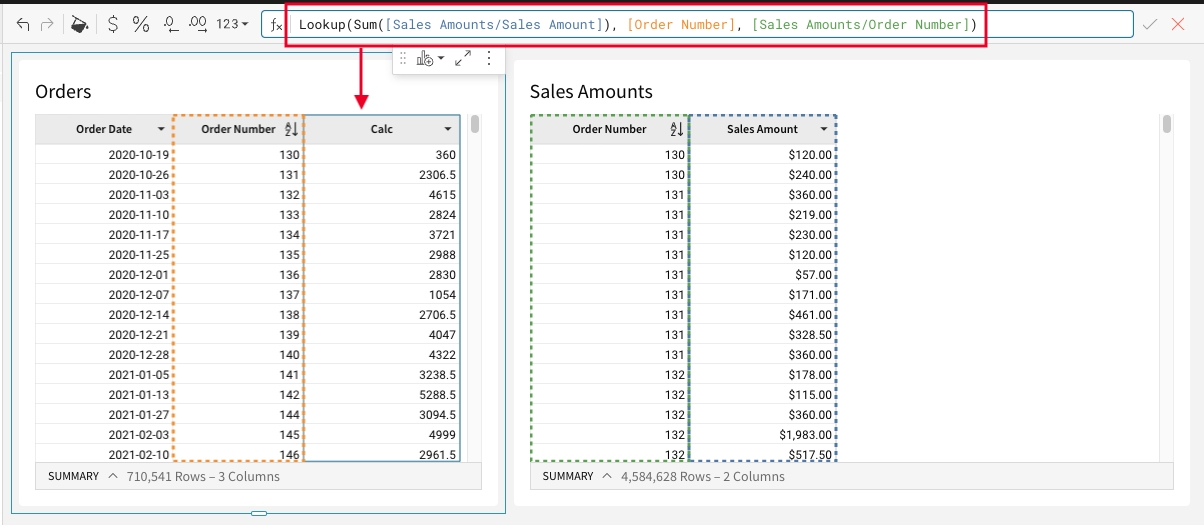Lookup
The Lookup function finds matching data inside a workbook data element, either in the same table, or in an external table.
All elements must be on the same data connection.
Syntax
Lookup(formula, local key 1, external key 1, [local key 2], [external key 2], ...)This function has the following arguments:
formula
Required The formula to compute (or the target column to reference) for the row in the target element.
local key 1
Required The column to use as a join key in the local data element.
external key 1
Required The column to use as a join key in the target data element.
local key 2
Optional The additional column to use as a join key in the local data element.
external key 2
Optional The additional column to use as a join key in the target data element.
Examples
Lookup([Customers/Cust Name], [Cust Key], [Customers/Cust Key])Data is inserted into the Sales table’s [Calc] column from the Customer table’s [Cust Name] column.
These two tables are joined using a single column (join key) from each table. In this case, both join keys are named [Cust Key].
The function’s formula parameter directly references a column in the joined table.
📘In formulas, reference columns from other tables with the [table name/] prefix (e.g. [Customers/Cust Name]).

Data is inserted into the Ordered Items table’s [Calc] column from Customer table’s [Zip Code] column.
The function’s formula parameter directly references a column in the joined Customers table.
These two tables are joined using two sets of join keys:
Order Items’ [Cust Name] column is joined with Customer’s [Name] column;
Order Items’ [Cust Key] column is joined with Customer’s [Cust Key] column

Data is inserted into the Orders table’s [Calc] column from Sales Amount table’s [Sales Amount] column.
The function’s formula parameter uses the Sum function to aggregate values from the Sales Amount table’s [Sales Amount] column.
These two tables are joined using a single set of join keys: Orders’ [Order Number] column is joined with Sales Amounts’ [Order Name] column.

Last updated
Was this helpful?